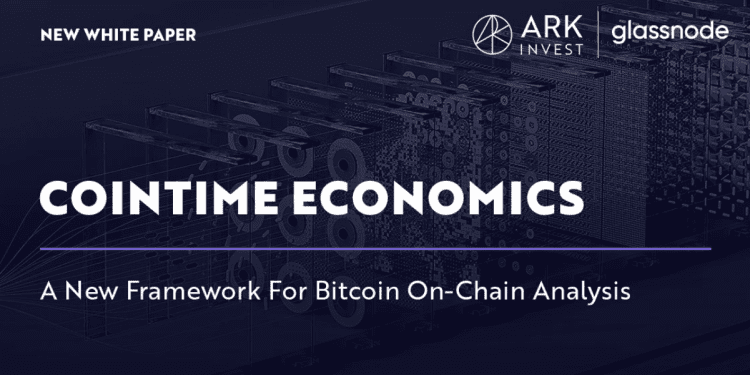- Ark Invest and Glassnode introduce “Cointime Economics,” a novel framework for understanding Bitcoin’s economic dynamics, especially during bear markets.
- Cointime evaluates Bitcoin’s economic value based on its movement history, emphasizing the significance of older, stationary coins.
- Two new metrics, “Liveliness” and “Vaultedness,” have been introduced to gauge the activity and inactivity levels of the Bitcoin network.
Investment firm Ark Invest, in collaboration with blockchain security company Glassnode, recently published a whitepaper titled “Cointime Economics: A New Framework For Bitcoin On-chain Analysis.” This framework seeks to offer a novel toolkit for understanding Bitcoin’s economic realities, especially in bear markets.
Authored by David Puell of ARK Invest and James Check of Glassnode, the paper spotlights a unique perspective on how Bitcoin’s economic value should be assessed. Traditionally, Bitcoin’s economic analysis relies heavily on the Unspent Transaction Output (UTXO) model. However, Cointime Economics introduces a fresh model known as “cointime.”
In simple terms, cointime evaluates the “real economic weight of a Bitcoin” based on the last time it was moved. A key concept presented in this framework is the “coinblock.” It’s a unit that multiplies the number of Bitcoins by the number of blocks produced while the Bitcoin remains stationary. For instance, if you hold 10 coins during the duration it takes to produce 10 blocks, it amounts to 100 coinblocks.
According to the authors, when there’s significant destruction of coinblocks, it signals that long-term holders, or the “smart money,” are offloading their Bitcoin. These investors typically own vast Bitcoin balances, operate from lower cost bases, and yield more substantial profits.
Cointime Economics vs. UTXO: A Comparative Insight
The innovative cointime framework provides a mathematically consistent method of gauging each Bitcoin’s economic significance over time. Unlike the UTXO model, which assigns equal value to every coin, the cointime approach weighs each Bitcoin by the duration it has been stationary. Thus, if older coins move, they exert a more considerable influence on Bitcoin’s economic activity.
The authors introduce two novel metrics to assess Bitcoin’s economic condition:
- Liveliness: This metric reflects the network’s activity level, indicating the frequency with which coins are moved or obliterated.
- Vaultedness: It signifies the number of coins that remain stored, highlighting the protocol’s inactivity level.
The traditional UTXO model views inactive Bitcoin as those unspent by miners. Conversely, in Cointime Economics, the “vaulted supply” represents the total coinblocks created minus the ones not destroyed.
Bitcoin’s Road Ahead
Despite the groundbreaking frameworks and tools at our disposal, Bitcoin still faces real-world barriers. One immediate concern is its macroeconomic situation. As interest rates rise, investors incline towards risk-free assets with dependable returns. Bitcoin, lacking intrinsic value and cash flow potential, struggles to rival Treasury bills or cash.
Moreover, Bitcoin’s primary allure remains its potential price appreciation, rather than its utility. However, there is a silver lining. The upcoming halvening event in April 2024, which will slash rewards for Bitcoin miners, has historically been a precursor to market surges.














